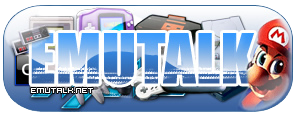ceedj
Pencil Neck Geek
Xenix anyone? - 20,000 files ARGHHH!
Ok smarty-types, see if you can crack this one.
At our bowling center, our lanes use a Xenix based system for scoring, cash register, etc. It's a decent little machine, but I don't know a whole lot about Xenix. I DO know it's a variant of Linux, and about 20 years old, but I'm having a problem with backups.
I've been getting this "huge directory error" when we try to use the backup tapes. What sucks is that Brunswick sold us a $300 tape drive, $60 repair disk, and THEN said that we're unsupported, since we bought the system from another center and didn't get a license from Brunswick. (The funny thing is, my boss, who is a great guy, is a multi-millionaire, but I have to drag him kicking and screaming to get something as small as a mouse replacement).
Anyway, I'd like to try to solve this before I say screw it and slap the tape drive in our Windows machine and pray I don't have to re-enter about 40-50 hours of data in the middle of our season.
So, can anyone help? Anyone know about this crappy OS? Don't even ask about uprgrading to Windows, as we'd have to spend about $5000 or so on new software and interface epuipment.
Thanks in advance.
Ok smarty-types, see if you can crack this one.
At our bowling center, our lanes use a Xenix based system for scoring, cash register, etc. It's a decent little machine, but I don't know a whole lot about Xenix. I DO know it's a variant of Linux, and about 20 years old, but I'm having a problem with backups.
I've been getting this "huge directory error" when we try to use the backup tapes. What sucks is that Brunswick sold us a $300 tape drive, $60 repair disk, and THEN said that we're unsupported, since we bought the system from another center and didn't get a license from Brunswick. (The funny thing is, my boss, who is a great guy, is a multi-millionaire, but I have to drag him kicking and screaming to get something as small as a mouse replacement).
Anyway, I'd like to try to solve this before I say screw it and slap the tape drive in our Windows machine and pray I don't have to re-enter about 40-50 hours of data in the middle of our season.
So, can anyone help? Anyone know about this crappy OS? Don't even ask about uprgrading to Windows, as we'd have to spend about $5000 or so on new software and interface epuipment.
Thanks in advance.
Last edited:
